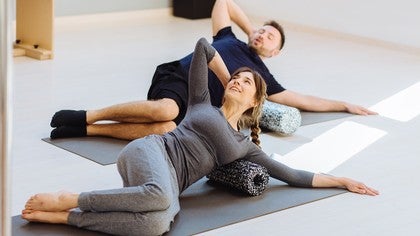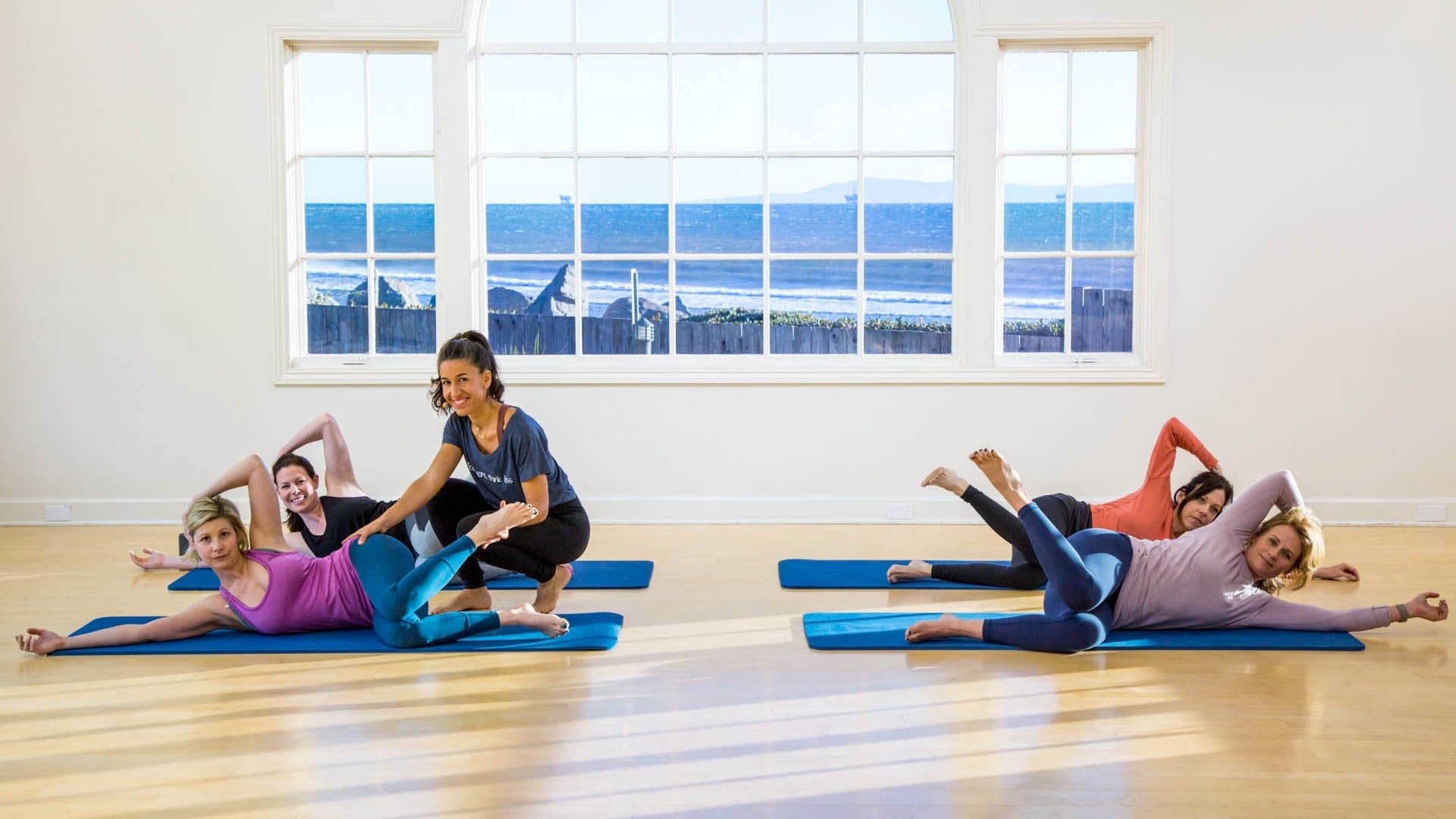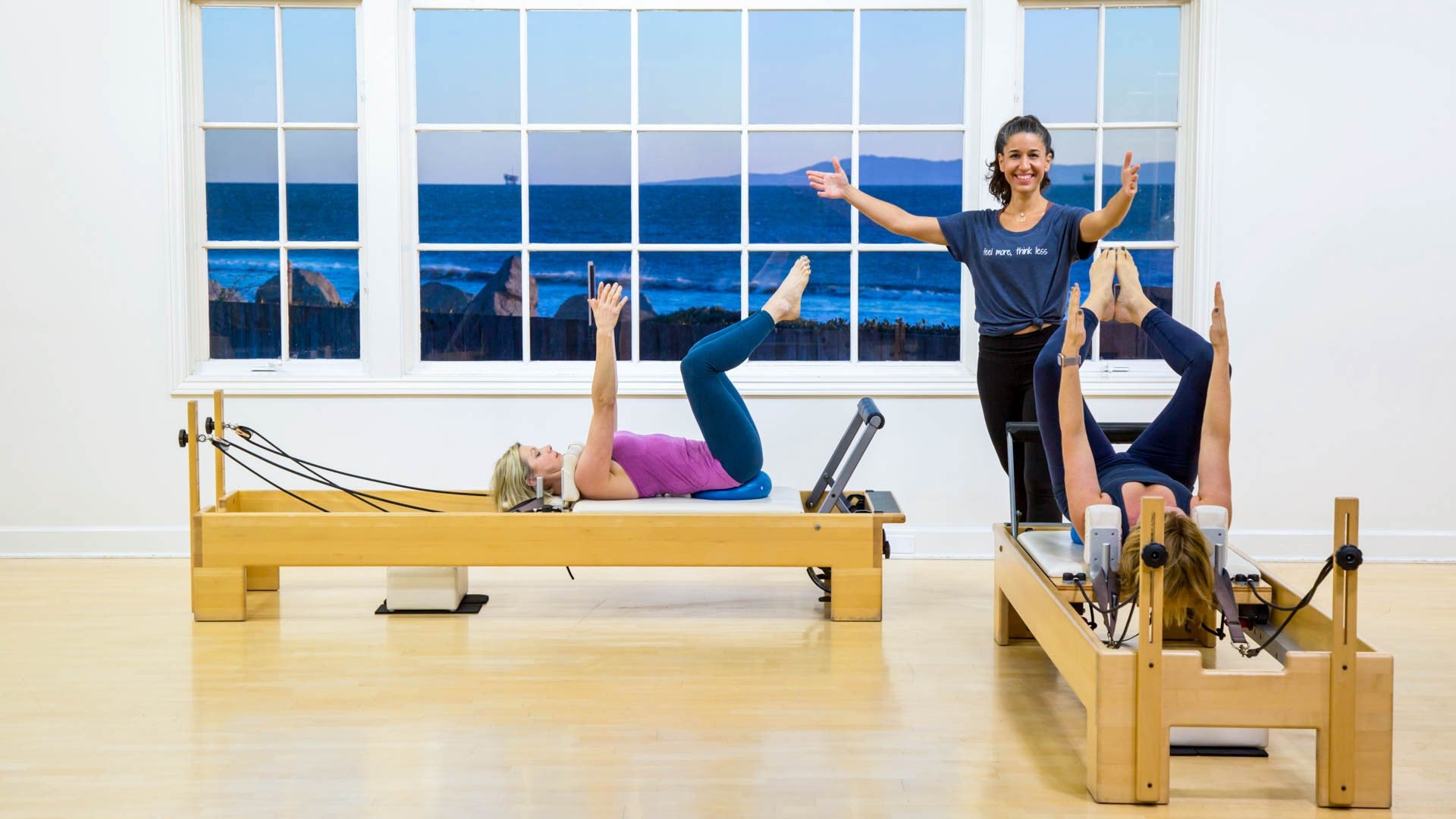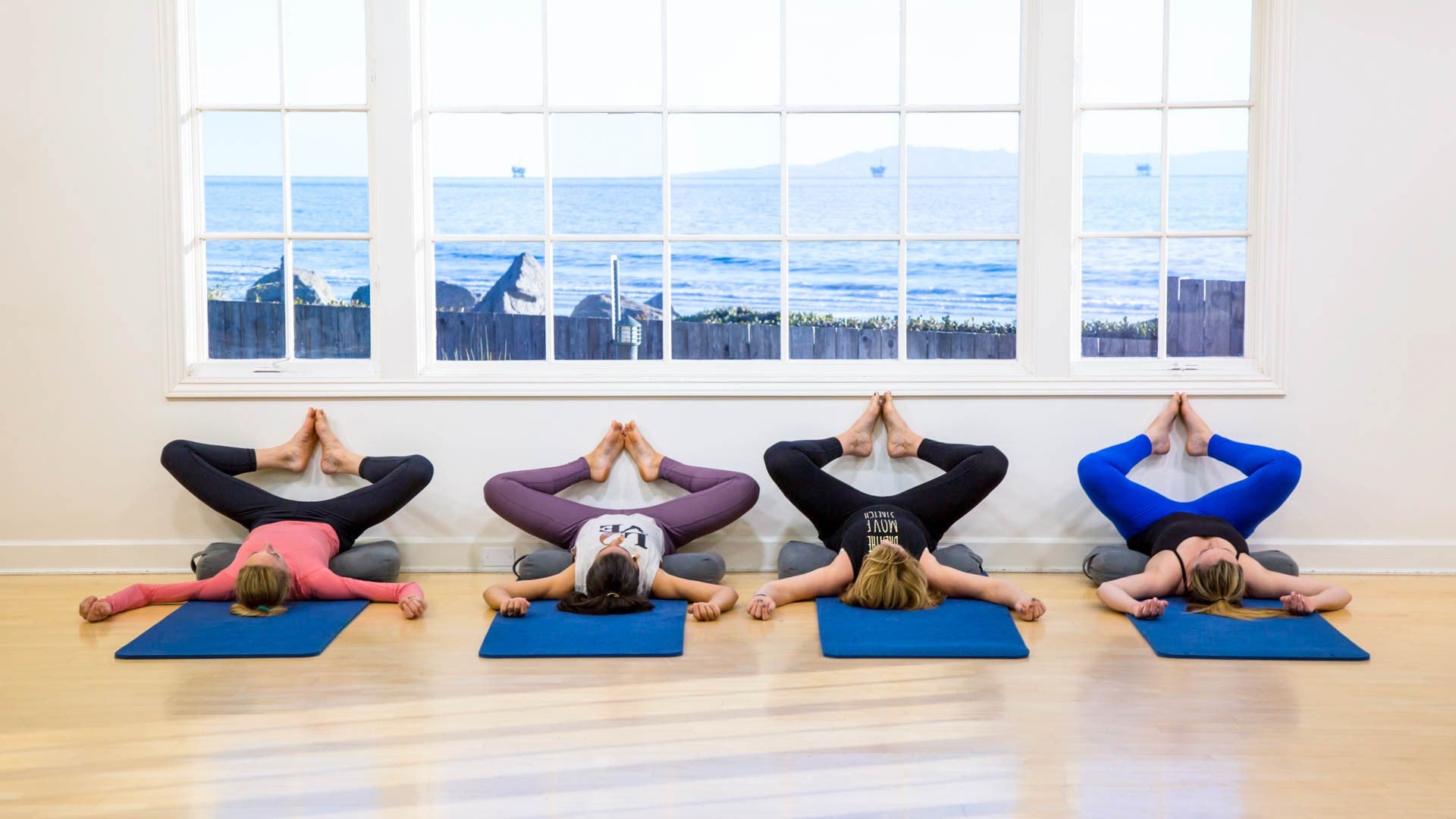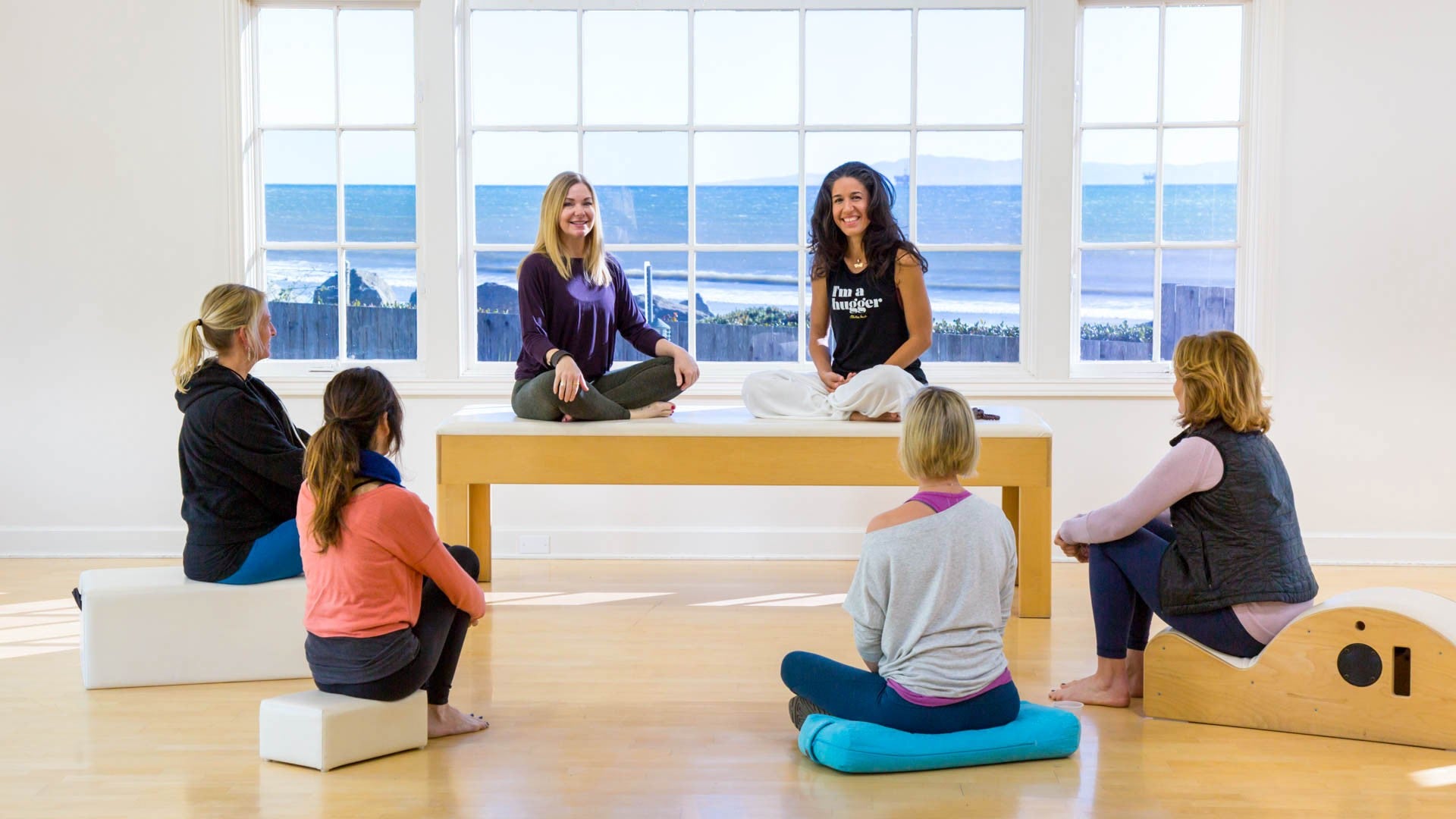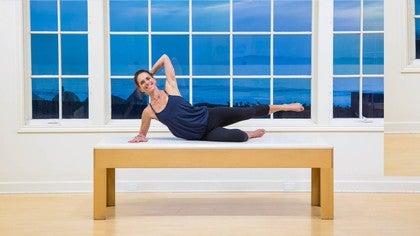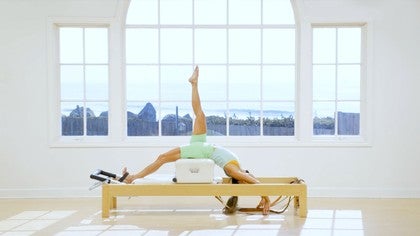
Understanding Pilates and the Pelvic Floor
Imagine cutting an orange in half. You’d end up with a dome. The pelvic floor, like the orange half, is dome-shaped. And similar to the orange peel, the pelvic floor encloses the contents of the pelvis: bladder, rectum, and uterus in women. Beyond these specific pelvic organs, the pelvic floor provides the foundation for the trunk. The pelvis at large is like the steering wheel of the body and plays a central role in bipedal locomotion.
When we refer to the pelvic floor, we are often referring to the soft tissue structures that close the bottom of the pelvic bones. These dynamic and spring-like structures support the pelvic organs, contribute to core stability, and help maintain the function of the bowel, bladder, and sexual systems. The pelvic floor also helps regulate the evacuation and storage of urine and stool, as well as providing stability for movement.
It is important to understand that the pelvic floor is functioning all day long. At this very moment, much like your heart and lungs, the tissues of the pelvic floor are doing their job to keep your organs in place and functioning. Well-functioning organs depend on coordinated pelvic floor contractions and releases, which occur synergistically with the thoracic diaphragm on every breath.
"Perhaps one of the greatest misconceptions about the pelvic floor is that we need to actively engage it in order for it to function properly."
Fundamentally, pelvic floor function is spontaneous. It does not require our awareness, control, or thought. The pelvic floor, like all vital systems, functions unconsciously and is controlled by the autonomic nervous system. The autonomic nervous system is characterized by two subsystems; the sympathetic and parasympathetic nervous systems. The sympathetic nervous system is commonly referred to as the fight-or-flight system that is basically responsible for our survival and increases heart rate and breath when there is a threat. The parasympathetic nervous system is commonly associated with the relaxation response after the flight-or-fight response has been stimulated. Chronic stress and fear can lead to health issues, including pelvic floor dysfunction.
Pelvic floor dysfunction can present itself in an array of forms, both physical and psychological. Conditions like urinary and fecal incontinence, pelvic organ prolapse, bowel dysfunctions, chronic pelvic and low back pain, sexual dysfunction, and vulvar disorders. The sensitive nature and societal norms around sexuality and elimination make the topic of pelvic dysfunction sometimes obscure, mysterious, and challenging to understand.
Background on Pelvic Floor Exercises
In the 1940s and 50s gynecologist, Arnold Henry Kegel brought light to pelvic health with his invention of the perineometer, an instrument for measuring the strength of voluntary contractions of the pelvic floor muscles. He is widely known for the pelvic floor exercises that bear his surname, Kegels.
Kegels involve repetitive contractions of the tissues of the pelvic floor, which may be beneficial in certain instances and in others, can increase tension and dysfunction. It is very important that anyone struggling with a pelvic floor condition seek out a trained pelvic health physical therapist who can assess the appropriate intervention from a neuromuscular perspective. Kegels may be beneficial for some individuals, but as Pilates professionals, it is not our place to cue or recommend these volitional contractions. Instead, as movement practitioners we can bring awareness and observation to the area, and focus on balancing the breath with coordinated movement, knowing that the nervous system is ultimately in charge.
What Role Does Pilates Play in Pelvic Floor Health?
Pilates is quite perfect when the mind is focused on the relationship between body landmarks or structural alignment, and breath, thus improving ease and efficiency in the way we move. The greatest difference between Pilates and Kegels is that Pilates is rooted in ‘Whole Body Health’ and ‘Whole Body Commitment’. Pilates always brings awareness to our entire system and person, rather than isolating a specific area. A Pilates environment, when filled with compassion and the understanding that each person is unique, is an ideal place for self-discovery, empowerment, and healing.
In most, if not all Pilates programs, restoring and balancing hip and spine mobility are fundamental goals. The human body is designed to sit and squat either on or low to the ground. The simple goal or task of spending time on the floor is a wonderful way to restore pelvic floor function, elasticity, and maintain health.
The key things to keep in mind as we reflect on pelvic floor health are focusing on our breath, bringing down the stressors in our lives, and having a healthy relationship with the floor are simple ways to stay strong and restore balance.
Comments
You need to be a subscriber to post a comment.
Please Log In or Create an Account to start your free trial.


